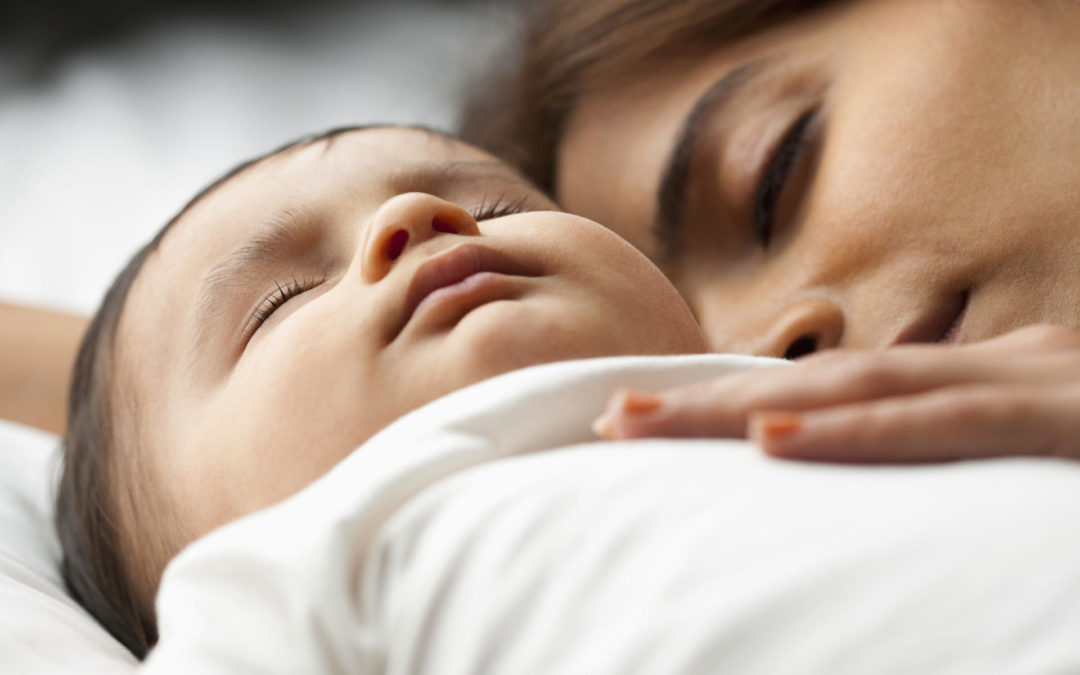
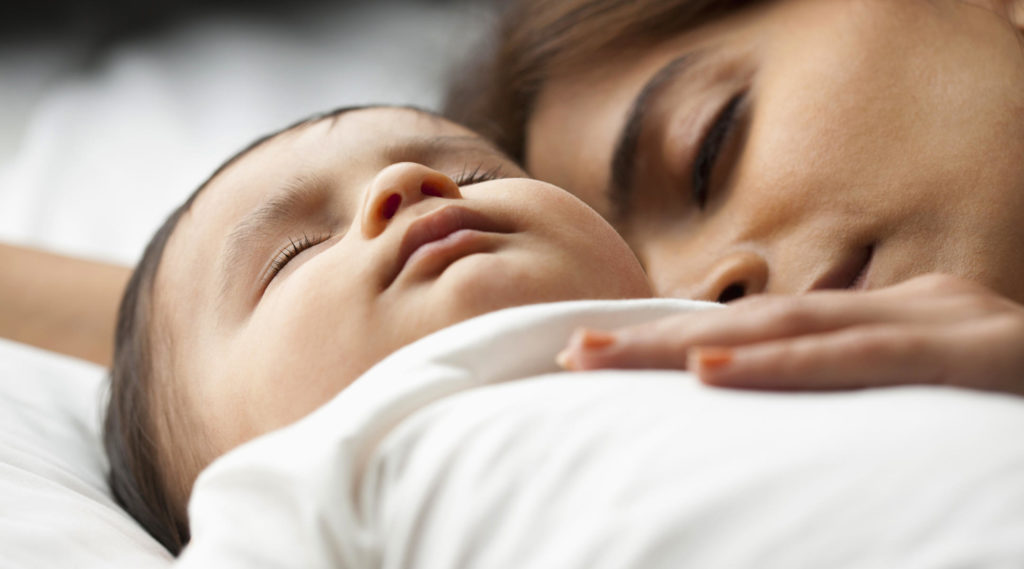
Good sleeping habits start early.
As you get your new baby settled in at home, starting a sleep training regimen helps a baby learn how to fall asleep and stay sleeping through the night on their own. Some little ones take to sleep training effortlessly and others need a little more patience and encouragement to develop their own sleeping patterns.
Not every sleep training technique works for everyone and with the right support system in place, parents can find the sleep training method that aligns best with their parenting style and the needs of their baby.
When can I start sleep training?
Most sleep training professionals recommend starting a sleep training routine when your baby reaches their 4 to 6 month milestone. By this point, most babies have stopped night feedings and is starting to develop their own sleep-wake cycle. Developmentally, babies of 4 to 6 months can safely sleep through the night in long stretches. All babies are different, and your little one might not be ready to start sleep training until 8 or even 10 months old. Consult with your doctor if you have any questions about your baby’s development or if you’re unsure about when to start sleep training.
Preparing to Sleep Train
Any good night’s sleep begins with a bed time. A good starting place is to introduce a bedtime routine and many parents have night time rituals already in place as early as 6 weeks. It’s never too late for an evening relaxation routine including a warm bath, a bedtime story or a lullaby. Keep bedtime consistent and at the same time each night. Experts recommend 7 to 8pm to keep your baby from becoming overtired and fighting sleep. The predictability of bedtime, nap-time and waking each morning, helps your baby relax and acclimate to a natural sleep pattern.
Set the Scene
Your baby’s bedroom, nursery or sleep space should be comfortable and invite sleep. Keep lights dim and the temperature cool and comfortable at a 65 – 75 degrees. If your nursery is sunny during the day, room darkening shades can help your little one relax for nap-time and help them develop their own circadian rhythm. This rhythm encourages your baby to get sleepy at sundown and wake in the morning. A white noise machine can also be useful in creating a comforting space for your baby to relax and get a good night’s sleep. Lay your baby down while they’re awake to help encourage them to be comforted by the space around them each night.
Technique
There’s tons of sleep training techniques to choose from that includes everything from co-sleeping to “cry it out” and everything in between. A starting point that many parents feel comfortable with is “move the chair.” Use the same calming techniques as you lay your baby down for sleep at night, while sitting in a chair near their crib. Every three nights move your chair further away from the crib until you’re ultimately out of the room and out of view. Keep this move consistent to keep your little one feeling dependent on your presence in the nursery for them to fall asleep.
As with beginning any training or parenting routine with your baby, patience and support is key.
Sleep training can be a frustrating process, but with patience, your baby will be sleeping soundly and all on their own. Not every family or baby is the same and being flexible with your sleep training styles can help you find the method that is right for you and your baby.
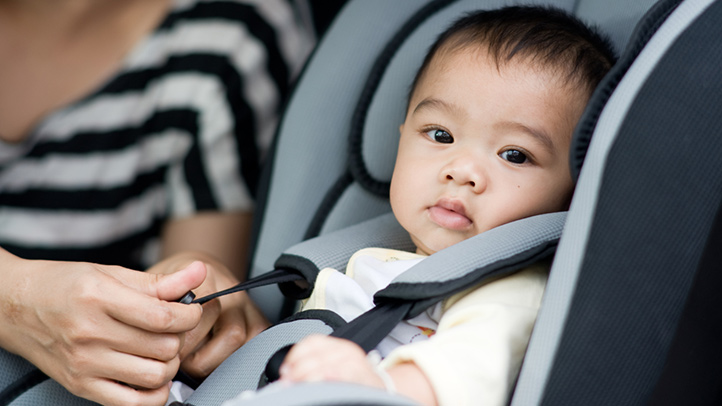

If you’re a few weeks away from bringing home baby, you’ll need a safe car seat for your precious cargo.
Car seat safety might be the last thing on your mind if you’re anxiously awaiting baby, but it’s actually one of the most important baby gear items you’ll need. With all the different car seats on the market it can be overwhelming for parents to choose the right one for your family.
Your baby’s first car seat is more important than you think and with some resources and safety facts, you can bring your little one out and about as safe as can be.
Car Seat Safety Basics
Babies are at greater risk of injury in crashes and even small car accidents as their spines are still developing to support their noggins. Having a car seat rear-facing keeps your little one from being thrust forward and injuring their delicate spinal column in a collision. Experts recommend keeping your car seat rear facing until your little one is about 2 years old or just about 35 pounds. The car seat should always be in the back seat of the vehicle with your baby properly harnessed in.
The harness should be snug but not too tight, with straps lying flat and untwisted or bent. It’s important to keep these straps close to their body and bulky sweaters, snowsuits or blankets underneath the harness can keep the straps from holding your little one in the seat properly. If you need to use a blanket, laying a blanket across their lap while they’re buckled safely is usually the way to go. For new babies, a blanket can be a suffocation hazard so it’s safer to use a car seat cover instead.
If your baby’s head is getting close to the top of the car seat, they might be ready for a bigger seat!
Car Seat Safety Check
If you’re unsure about getting your baby’s car seat properly hooked up, getting a safety check is always a good idea. Your local fire department may offer classes on car seat safety and will usually provide a free safety inspection for your seat once you’ve set up your baby’s car seat. As your little one grows you should continue getting car seat safety checks with each seat progression to keep your precious cargo safely buckled.
Car Seat Accessories
Some accessories can make a big difference in your baby’s car seat safety. Shoulder cushioning can keep little shoulders properly harnessed into their seat. These cushions also keeps your baby’s head and neck supported in the car seat while their spine continues to develop. Car seat liners can also support your baby’s body shape and keep them from slouching and preventing the harness from working appropriately. Not to mention, there’s some fun gadgets that can also keep your baby entertained and under close supervision during rides in the car.
Trips in the car don’t have to be stressful.
With the right car seat and a checklist of safety tips, you’ll be ready to go when your baby arrives and it’s time to bring them home for the very first time.
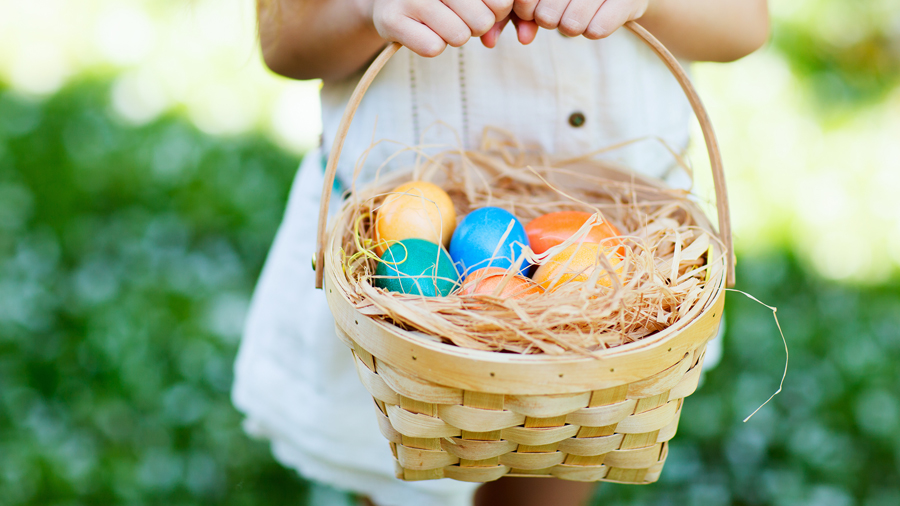

This Easter, you don’t have to travel far for some fun Easter activities for the whole family.
Whether you’re spending time at home with the kids or having a big group of family and friends for dinner, there’s plenty of spring time fun to keep everyone occupied. Easter traditions are usually the first celebration of warmer seasons and sweet new beginnings to a great year.
Getting friends and family together for an Easter party at home is a great opportunity to play some fun games and let your creativity shine with unforgettable Easter activities.
Gather your family and friends together while you make some new family traditions you’ll look forward to every spring!
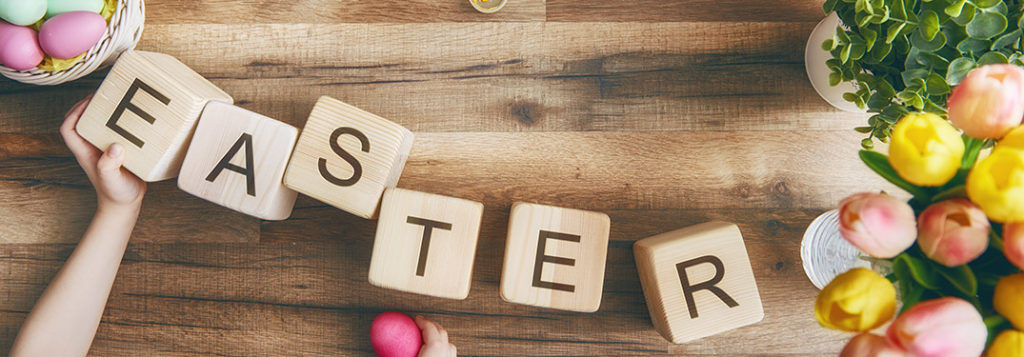
Easter Egg Hunt
An egg hunt is one of the most exciting Easter activities that families enjoy year after year. Kick your egg hunt up a notch with some fun twists to keep things innovative and unique. Take a few empty egg cartons and paint the inside of each with a different color and number the top with a black marker (Four kids means four cartons). Before the kids can start they have to pull a number that chooses the carton they have. Hide 12 eggs of each color in various areas around the yard so each kid has an equal opportunity to get the same amount of eggs. If you want to raise the stakes for your scavenger hunt, the first child to fill their egg carton wins the golden egg that contains an extra surprise.
Egg Toss
Who says your Easter fun can’t be a little messy? If you’re expecting a big group for brunch or dinner, an egg toss can be a whole lot of fun. Encourage guests to bring clothes that can get messy or encourage them to design funny shirts for their team of two! Distinguish your starting point about 3-4 feet apart, one person from each team stands on either side to start. On one side, mark up to 5 lines that go increments of a foot backward.
Dye some raw eggs with different colors and give one to each team. Using a timer, each team will have to toss the egg and catch it gently without it breaking in their hand or falling to the ground. As every minute elapses, one team member is told to move back one foot. This will make the game harder! The winners get a gift card, an Easter basket or even some cash. It’s impossible to not have fun and lots of laughs with this silly egg game.
Chicken Spoon Race
Baby chicks are one of the most identifiable symbols of spring. This spoon race is a great yard game for kids and kids at heart. Make a starting and finish line in the yard, lining the kids up across the starting line. Each kid gets a plastic spoon and an egg. The object of the game is to balance the egg on the spoon while they hold it in their mouth and cross the finish line without dropping the egg. To make this game a little funnier and more of a challenge, your game contestants need to walk and flap like a baby chicken. Play the Chicken Dance song in the background for some big laughs and even bigger photo opportunities as all your chickens scurry to the finish line.
Doughnut Munch
This activity is dessert and a game all in one. Take a fairly wide (about an inch) and colorful ribbon and for five players, string five doughnuts spaced out onto the ribbon. Stale doughnuts actually work a little better for this since they’re a little more firm. Hang your ribbon taught between two posts and have your players line up along the ribbon. The object of the game is to eat their doughnut off the ribbon first before the time is up, and without any falling to the ground. This is hilarious to watch and a delightfully sweet finale for your back yard Easter party.
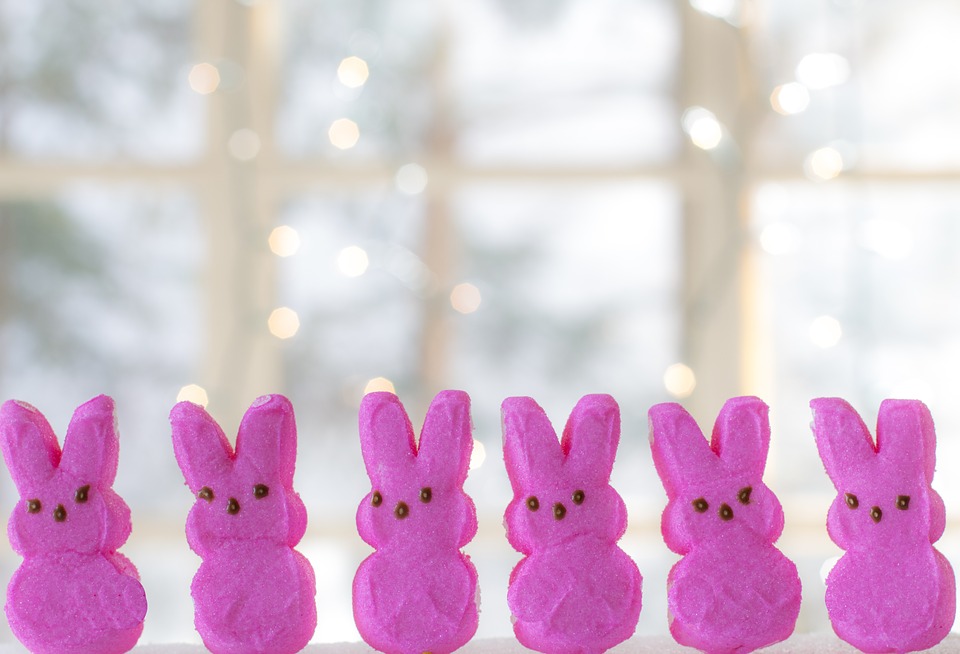
Get your favorite bunnies together for some backyard activities that will quickly become awesome family traditions for your annual Easter gathering.








